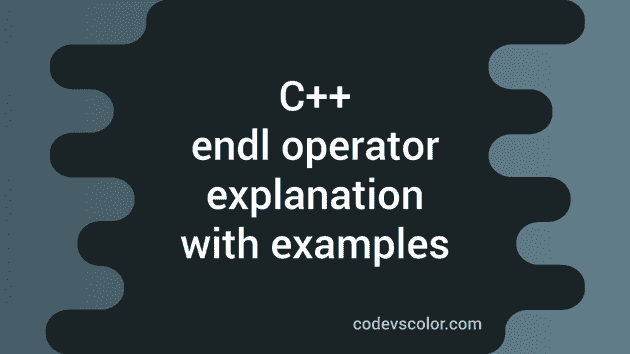endl in C++ :
endl stands for end line in C++. You can use this operator to insert a new line at the end of a line. It puts one new line and flushes the stream. Let me show you one small example :
#include <iostream>
int main()
{
std::cout << "First line..." << std::endl;
std::cout << "Second line..." << std::endl;
std::cout << "Third line..." << std::endl
<< "Fourth line..." << std::endl;
}It will print the below output :
First line...
Second line...
Third line...
Fourth line...
You can also use using namespace std if you don’t want to use std each time.
#include <iostream>
using namespace std;
int main()
{
cout << "First line..." << endl;
cout << "Second line..." << endl;
cout << "Third line..." << endl
<< "Fourth line..." << endl;
}It will print the same output.
Why we use endl instead of newline character :
Newline character ‘\n’ is another way to add a newline. Actually, endl appends ‘\n’ and calls flush() to flushes the stream.
So,
cout << "Hello"<< endl;
is equivalent to :
cout << "Hello"<< '\n';
cout.flush();

